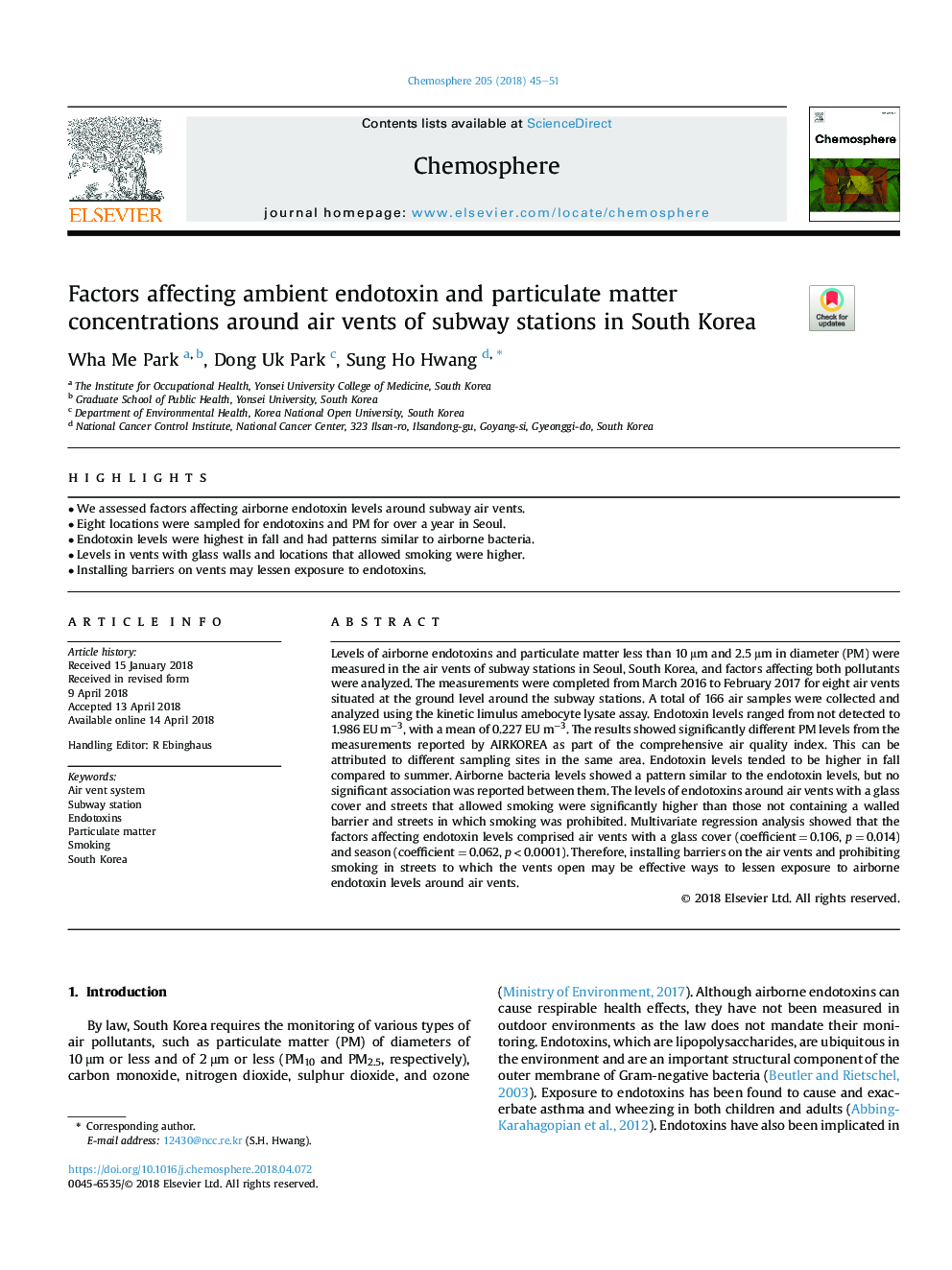| Article ID | Journal | Published Year | Pages | File Type |
|---|---|---|---|---|
| 8851079 | Chemosphere | 2018 | 7 Pages |
Abstract
Levels of airborne endotoxins and particulate matter less than 10â¯Î¼m and 2.5â¯Î¼m in diameter (PM) were measured in the air vents of subway stations in Seoul, South Korea, and factors affecting both pollutants were analyzed. The measurements were completed from March 2016 to February 2017 for eight air vents situated at the ground level around the subway stations. A total of 166 air samples were collected and analyzed using the kinetic limulus amebocyte lysate assay. Endotoxin levels ranged from not detected to 1.986â¯EUâ¯mâ3, with a mean of 0.227 EU mâ3. The results showed significantly different PM levels from the measurements reported by AIRKOREA as part of the comprehensive air quality index. This can be attributed to different sampling sites in the same area. Endotoxin levels tended to be higher in fall compared to summer. Airborne bacteria levels showed a pattern similar to the endotoxin levels, but no significant association was reported between them. The levels of endotoxins around air vents with a glass cover and streets that allowed smoking were significantly higher than those not containing a walled barrier and streets in which smoking was prohibited. Multivariate regression analysis showed that the factors affecting endotoxin levels comprised air vents with a glass cover (coefficientâ¯=â¯0.106, pâ¯=â¯0.014) and season (coefficientâ¯=â¯0.062, pâ¯<â¯0.0001). Therefore, installing barriers on the air vents and prohibiting smoking in streets to which the vents open may be effective ways to lessen exposure to airborne endotoxin levels around air vents.
Related Topics
Life Sciences
Environmental Science
Environmental Chemistry
Authors
Wha Me Park, Dong Uk Park, Sung Ho Hwang,
